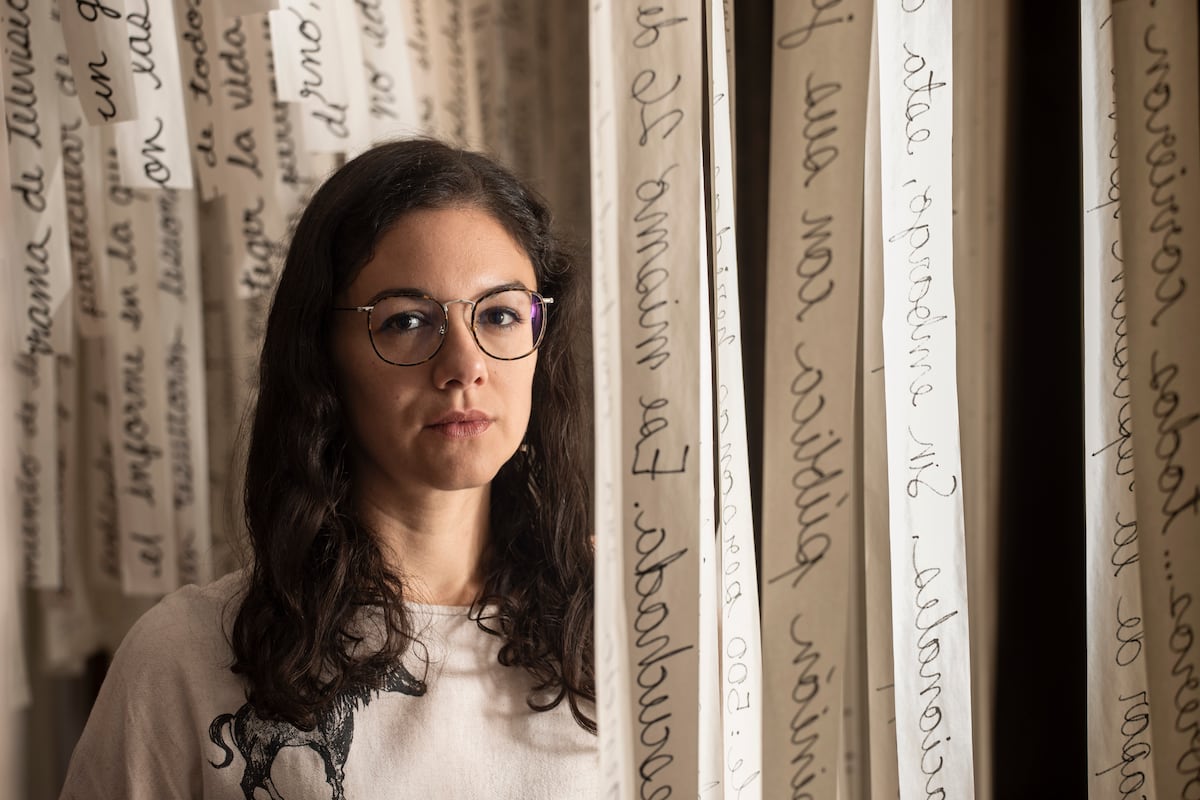Where are the artists in the history books?
Why did the Viennese professor Ernst Gombrich not include any of them in his canonical tome which he published in 1950 and still serves as a study manual?
Eugenia Tenenbaum (Santiago de Compostela, 25 years old) began to question this when she was in her third year of Art History at the Complutense University of Madrid, when her teacher Eva Fernández del Campo raised these doubts in her class.
Several years later, this Galician based in Madrid is one of the most followed art disseminators of the Network in Spanish among generation Z and millennials.
Tenenbaum publishes
The restless gaze
(Topics of Today), an essay on what goes wrong in the organization of “some museums that generate frustration and teach us to be in a hurry” —in order to be able to see the entire Louvre we would have to spend 100 days inside dedicating 30 seconds to each work—and where the representation of women, class and race in European art is explored.
Ask.
Is there a generation gap in the way of approaching art?
Response.
Definitely.
We young people really want to lose respect for him.
It has been sacralized too much.
Q.
And how is it desecrated?
R.
Demanding an update of the educational curricula.
History of Art has been taught in the same way in 2022 as in 1970. Nor can it be that the perspective of gender, race and class is studied residually or as a novelty.
There are no counter-hegemonic readings.
And, of course, we must regenerate the organisms of power in the institutions, whether in universities, museums or galleries.
P.
Elvira Dyangani Ose directs Macba and there are more women curating exhibitions, isn't that progress?
R.
Yes, but I don't know to what extent there is intention or it is pure
marketing.
Q.
Where has it happened?
A.
In the Prado.
It makes no sense to program
Invited
, a feminist exhibition, which was very good because they rescued funds that were collecting dust in the deposits, and immediately afterwards moved on to
Mythological Passions
, curated by the director himself, Miguel Falomir.
It was highly criticized for the lack of focus and context: those passions were actually "possessions", as the historian Emma Trinidad correctly recalled.
Where is the real commitment beyond punctual action?
I don't perceive it.
How are you going to prove that two 15th-century nuns sending fiery letters to each other were so much more than "intense friends" that they actually ate each other's mouths?
P.
Disclosure from a feminist and anticolonial approach, have we also made the LGTBQI invisible?
A.
Yes. We need to review the files with that look.
I think of the
Nefando Sin
episode , from the baroque review podcast
Las hijas de Felipe
,
or the book by Cristina Domenech,
Ladies who built themselves a long time ago
.
Now we can spread the word with a sense of humor, but it is very hard to fight with the iron schemes of the academy: how are you going to show that two 15th century nuns who sent fiery letters to each other were much more than "intense friends" and that in reality did they eat their mouths?
P.
Far from censoring, you ask to contextualize the artists and their works.
R.
We need to deconstruct and demystify the figure of genius.
To achieve this, you have to contextualize it.
Museums are not just exhibition spaces, they are educational environments.
Epistemic violence is when you ask a teacher in class why there are no women artists in a book and he answers that if they are not, it is because they did not exist.
P.
Do the artists have to undress to talk about them or enter the museum?
R.
As the Guerrilla Girls denounced, yes.
Several reports from Women in the Visual Arts (MAV) in recent years have also criticized the fact that almost three-quarters of the works acquired in the Prado Museum in this century are by men.
And that, although women are the ones who most enroll in Fine Arts careers, in the labor field, their representation is less than 30%.
That is, between 20 and 40% of the men who study Fine Arts obtain between 60% and 80% of the jobs.
We are the most prepared and the least able to work on our own.
P.
In the book you analyze the epistemic violence of art, what is it and when is it applied?
R.
Epistemic violence is to use the field of knowledge and knowledge as an authority to make invisible, to humiliate and reduce capacity, omitting information or misusing it.
Epistemic violence is when you ask a teacher in class why there are no women artists in a book and he answers that if they aren't, it's because they didn't exist.
Also that most do not know how to name a successful black artist in Spain.
P.
You write about the dichotomy of the artistic imaginary of women: virgins or jellyfish.
R.
It is a pattern as old as history itself.
The woman's body is a control mechanism: Eve and Lilith against the Virgin Mary.
They are two monolithic stereotypes that, although they have been diversifying, are still there: either saints or whores.
The good and the bad feminists.
The good and the bad mothers.
They are images that appeal to our corporability, that enclose us in the reproductive function and that can also be applied to the social.
It doesn't matter if we are good people, kind or if we are successful at work.
It only takes one slip for them to put us back in that narrow box.
The woman's body is a control mechanism: Eve and Lilith against the Virgin Mary.
They are two monolithic stereotypes that, although they have been diversifying, are still there: either saints or whores
P.
Rescue stories like that of Elisabetta Sirani, a Renaissance painter who was watched by her clients because they did not believe that those works of art were painted by a woman.
R.
His story is very paradigmatic.
How could a girl paint that!
She was continually watched and was a very prolific figure.
In ten years she painted more than 200 works.
She is also another example of another woman burned by the system.
They killed her from exhaustion.
Yet another case in which women have to be there all the time, relentlessly proving our worth to others.
Q.
You ask that “we don't take the bait with feminist criticism in revisionism”, why?
R.
Not everything a woman did has to be feminist.
The capitalization of the movement of the last decade, this desire to claim and relocate ourselves, has also been done in a depoliticized way.
They sell us that Isabel la Católica was a feminist, when she didn't care about Muslim and Jewish women, she makes my hair stand on end.
We must recover references, but we must know how to give them their place in history.
Exclusive content for subscribers
read without limits
subscribe
I'm already a subscriber



/cloudfront-eu-central-1.images.arcpublishing.com/prisa/KWUQSQKTDXNFKSUDZHDLLYB3JA.jpg)
/cloudfront-eu-central-1.images.arcpublishing.com/prisa/BKVAB2GXQNHNNP7Z34H3LBLHUA.jpg)










